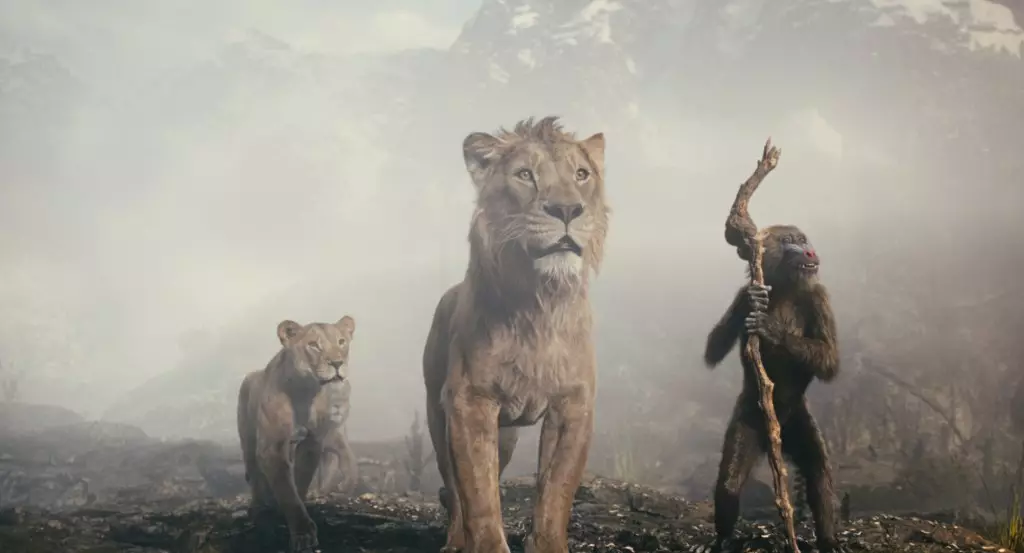The cinematic landscape is often a battleground, and Disney’s “Mufasa: The Lion King” has exemplified this in its competition against Paramount’s “Sonic the Hedgehog 3.” Despite starting with a domestic box office opening of $35.4 million—a stark contrast to Sonic’s impressive $60 million—Mufasa is now emerging as a sleeper hit. Looking at the trajectory of both films after 45 days in theaters, Mufasa has shown resilience, accruing a domestic total of $229.5 million compared to Sonic’s $230.5 million. This close competition suggests that while initial metrics may indicate a defeat, the long-term performance can yield a different narrative.
The struggle for box office supremacy illustrates how critical the timing of film releases and distribution strategies can be. Mufasa’s decision to pursue a 60-day theatrical window illustrates a bold choice in an era where many films opt for rapid transitions to digital platforms. This extended run has allowed Mufasa to maintain prominence in key Imax and Premium Large Format (PLF) screens, a vital strategy favorably recognized by exhibitors who appreciate prolonged theatrical exposure.
This week signifies an important milestone for Mufasa as it transitions to Premium Video On Demand (PVOD), scheduled to become available on platforms like Amazon Prime Video and Apple TV on February 18. The strategic delay in this digital release has played a pivotal role in bolstering the film’s box office gains, allowing it to compete effectively with Sonic the Hedgehog 3, which already made its PVOD debut on January 21 after just 32 days in theaters.
The decision to adhere to a longer theatrical window highlights an understanding that gradual market penetration can result in stronger audience retention, particularly as the film gains critical and viewer acclaim over time. This contrasts sharply with Sonic’s quicker move to PVOD, which, while initially lucrative, may lack the lingering appeal that Mufasa appears to be cultivating.
In assessing the global performance of both films, Mufasa has reached a worldwide gross of $652 million. Although this figure pales in comparison to the astonishing $1.66 billion earned by its predecessor, “The Lion King” (2019), it nonetheless reflects a commendable financial position, especially given its production budget of $200 million. In contrast, Sonic the Hedgehog 3 has grossed $462.5 million with a production cost of $122 million. The higher profitability margin of Sonic demonstrates its effective market positioning, but the raw numbers alone don’t tell the complete story of longevity or cultural resonance.
Mufasa’s long-term box office success can also be viewed through the lens of audience engagement, with features such as exclusive content on home media formats likely to sustain interest. For instance, bonus materials, including a full-length sing-along and behind-the-scenes features, provide additional value for viewers, showcasing the hard work that went into bringing the story to life.
Looking ahead, it is clear that both Mufasa and Sonic the Hedgehog 3 will influence the industry’s broader distribution strategies. Mufasa’s transition extends beyond mere box office numbers; it points to a potential shift in industry trends where longer theatrical runs may become more favorable. This success may encourage future productions to consider prioritizing deep audience engagement over immediate revenue, thereby enhancing the theatrical experience itself.
As Mufasa prepares for its DVD and Blu-ray release on April 1, the film continues to demonstrate the ability to capture the audience’s interest even after the initial theatrical rush. With its focus on conservation efforts through initiatives like the “Protect the Pride” featurette, Mufasa also aligns itself with contemporary social themes, potentially enhancing its appeal to modern viewers who are increasingly conscious of environmental issues.
While Mufasa may have stumbled initially, its steady rise offers a fascinating insight into the dynamics of film marketing and audience engagement, paving the way for a potentially bright future in an ever-evolving cinematic ecosystem. The battle may have begun with a challenging start, but its concluding chapters are sure to captivate audiences far beyond the theater walls.

